1. Solution Design
Design a data structure
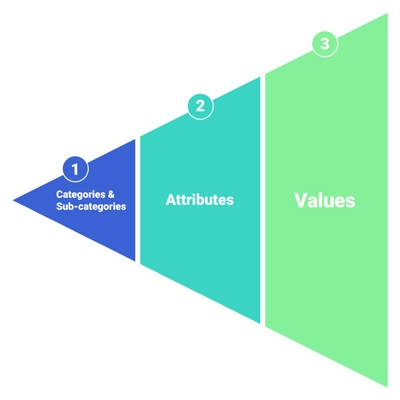
When there are more products, we have to classify them for better organization. In the very early stage of Artzy, we grouped products into main categories of personalized products like: photo printing, handwriting,... and focused on the photo printing one. Each product has attributes associated with it that describe it further. The main issue to consider here is whether the options are in effect, creating a collection of separate (albeit similar) products. Even with product design, we aim for future growth and sustainability. The contribute sets need to cover current product details, as well as future expansions. Each attribute (or facet) has a list of possible values that are only linked to that attribute.
Add attribute

Type of content
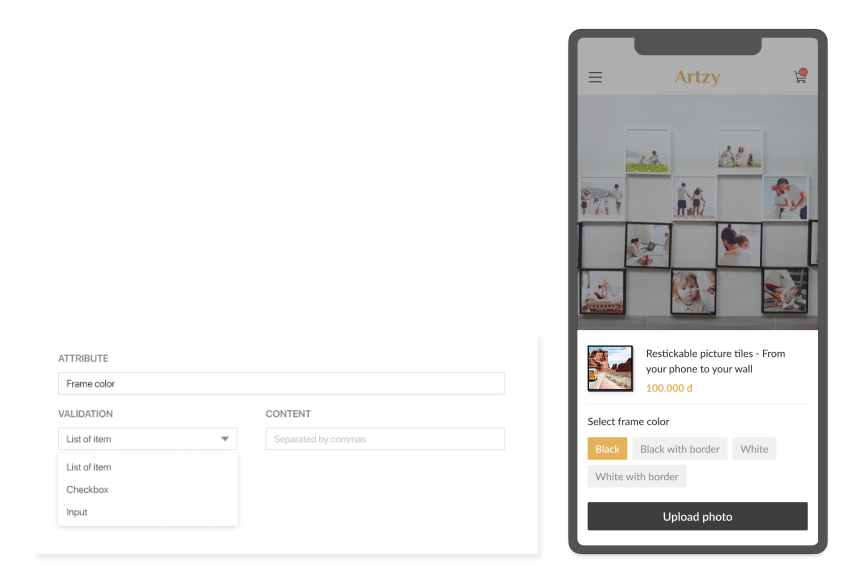
Price variation between options
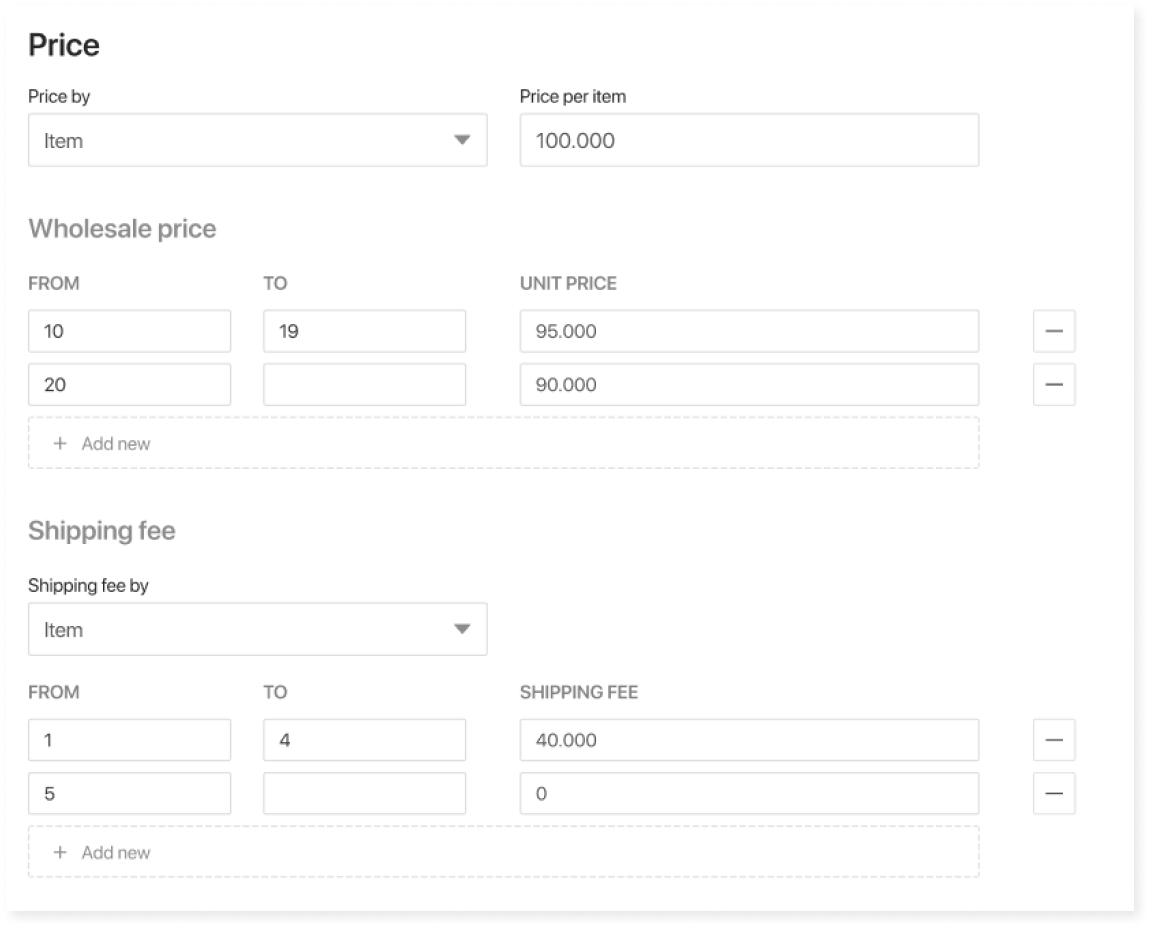
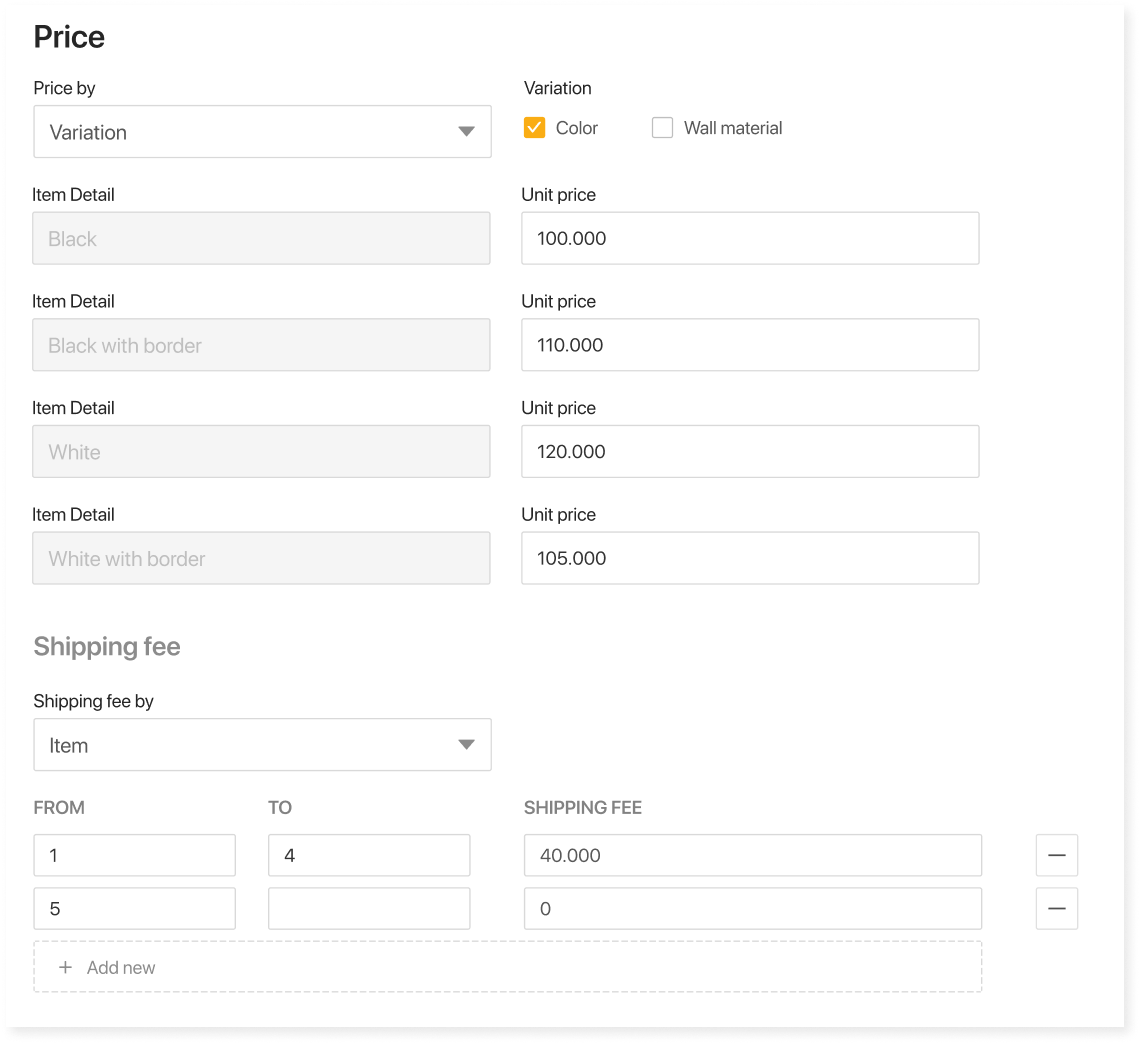
Improve uploading UX
Customer Segment
- Women 25 - 40, above-average income, familiar with online shopping, have a family, have a house/apartment, take a lot of photos with their mobile phone.
- Not heavily tech-savvy
Based on the target customers' general behaviors, the uploading photo flow should be simple; provided information, guidance and Call-to-action should be clear for end-users to follow to accomplish their tasks.
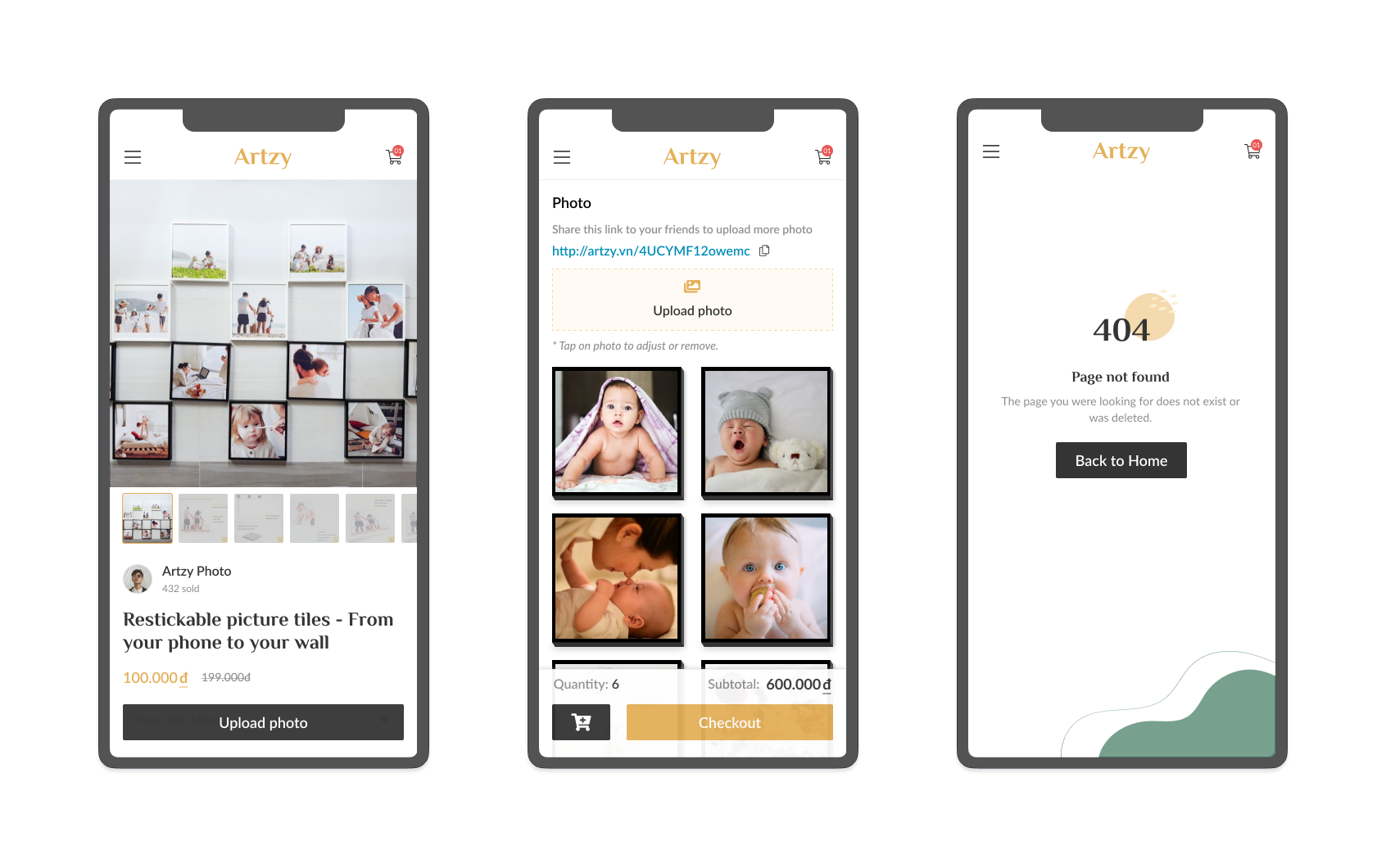
Upload multiple photos
The uploading function of the old platform focused on rendering the product mockup for user visualization. However, when it came to uploading multiple photos, the experience must be improved.
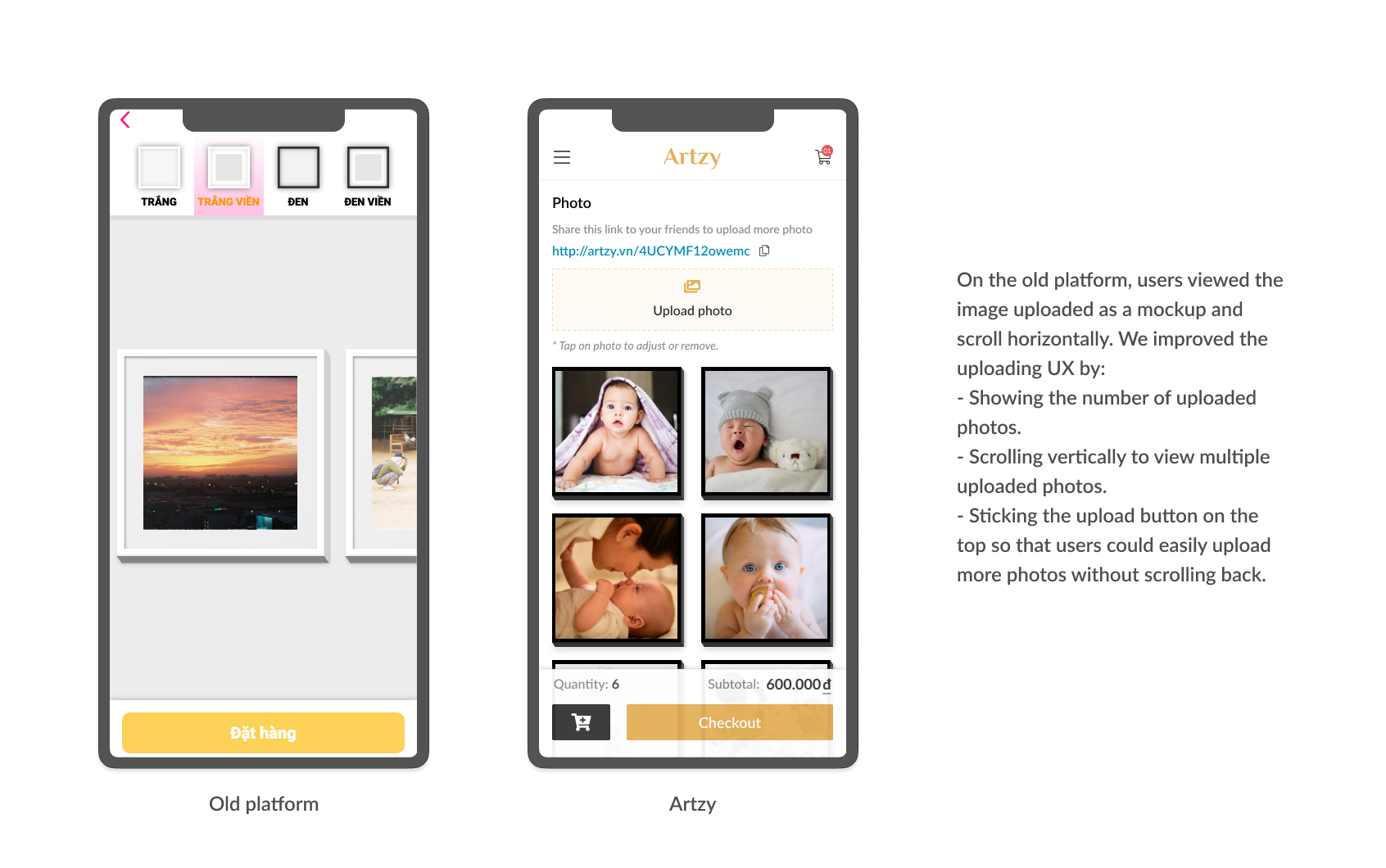
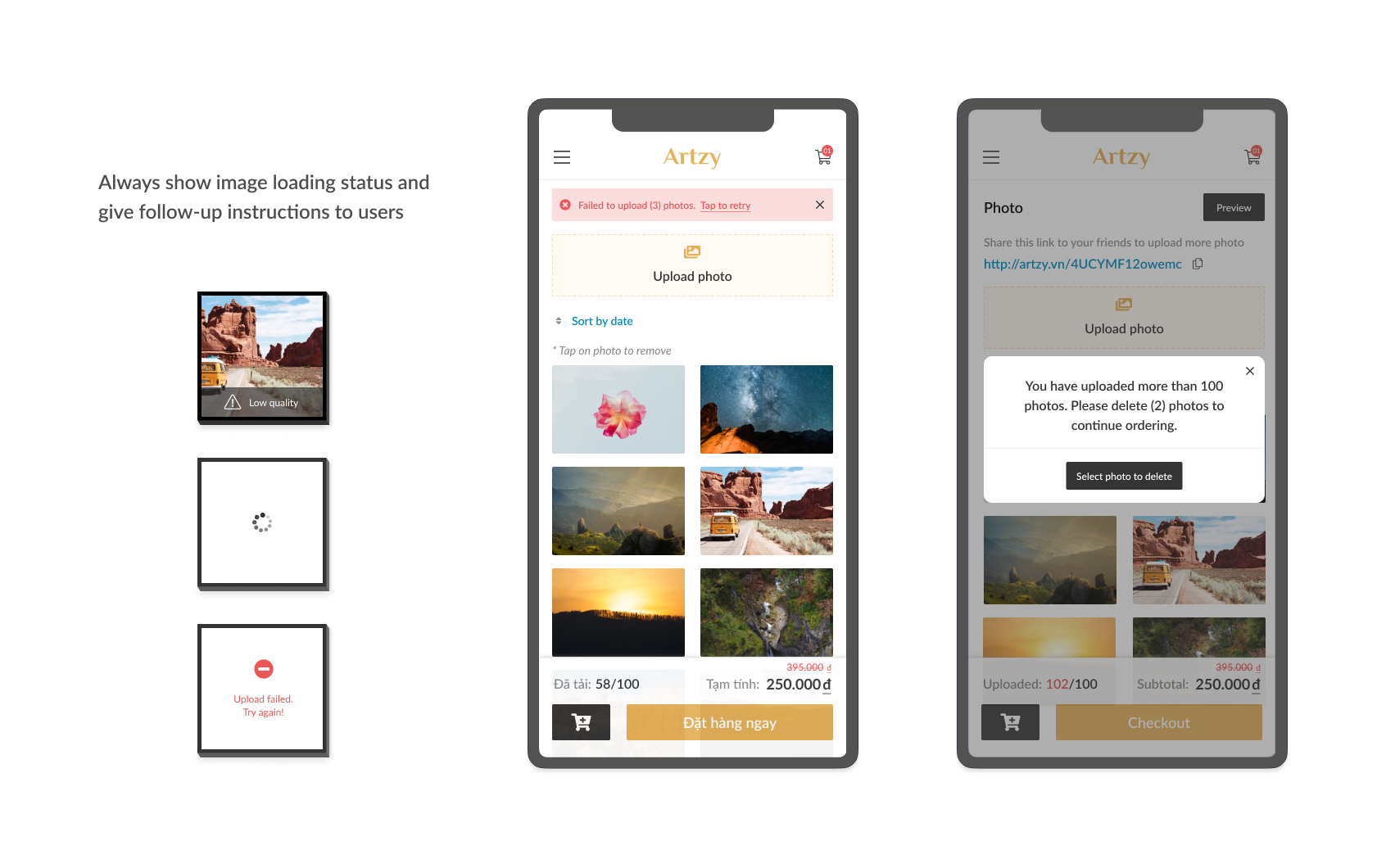
Build order management system
Process image
Due to the specification of the domain, we optimized the order management module by automating processing image flow. Once customers place orders, the uploaded images are processed automatically. Then, operators recheck and download materials and send them to manufacturers. It helps operators save time and effort, reduced manual errors.
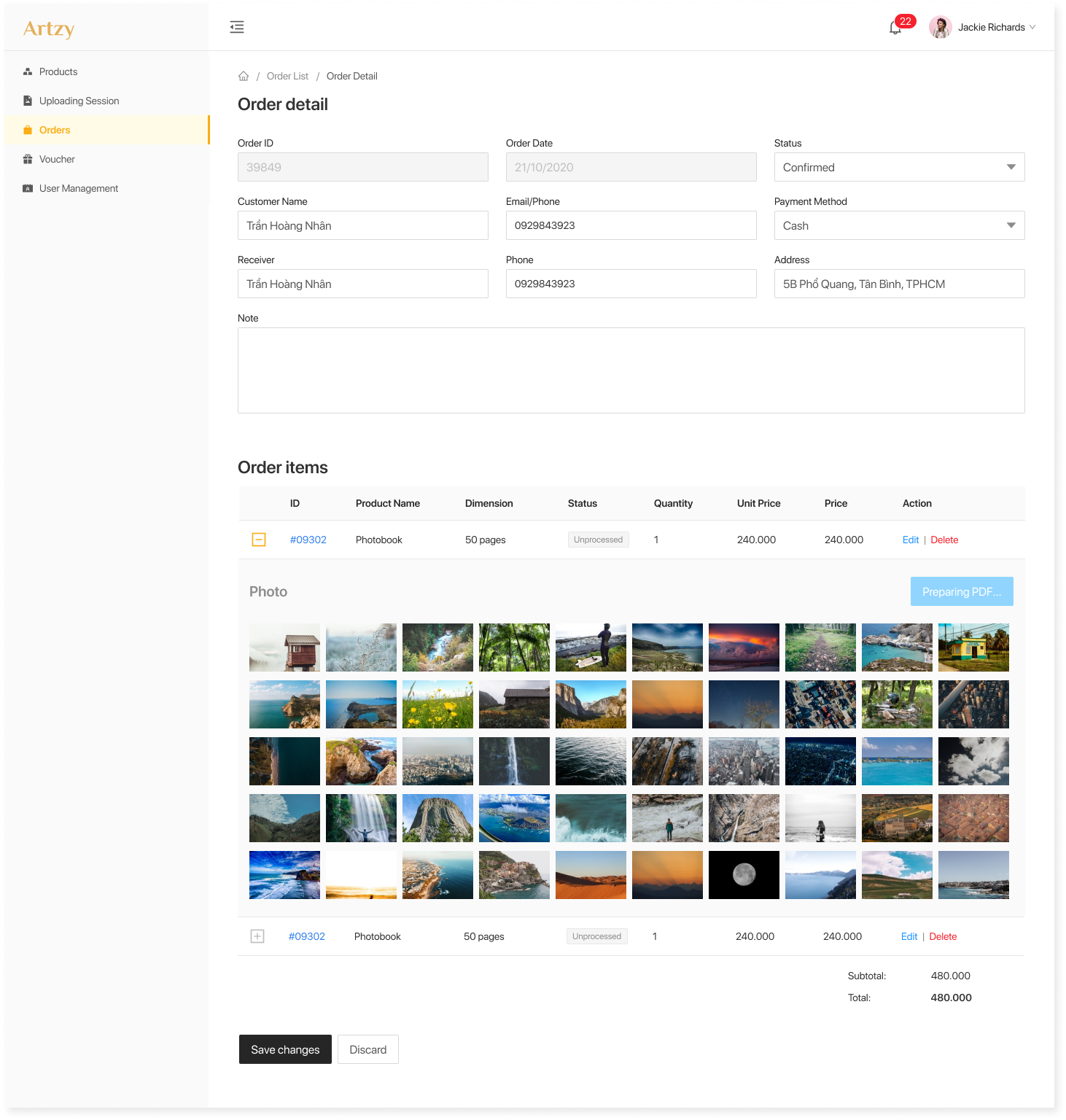
Auto processing image
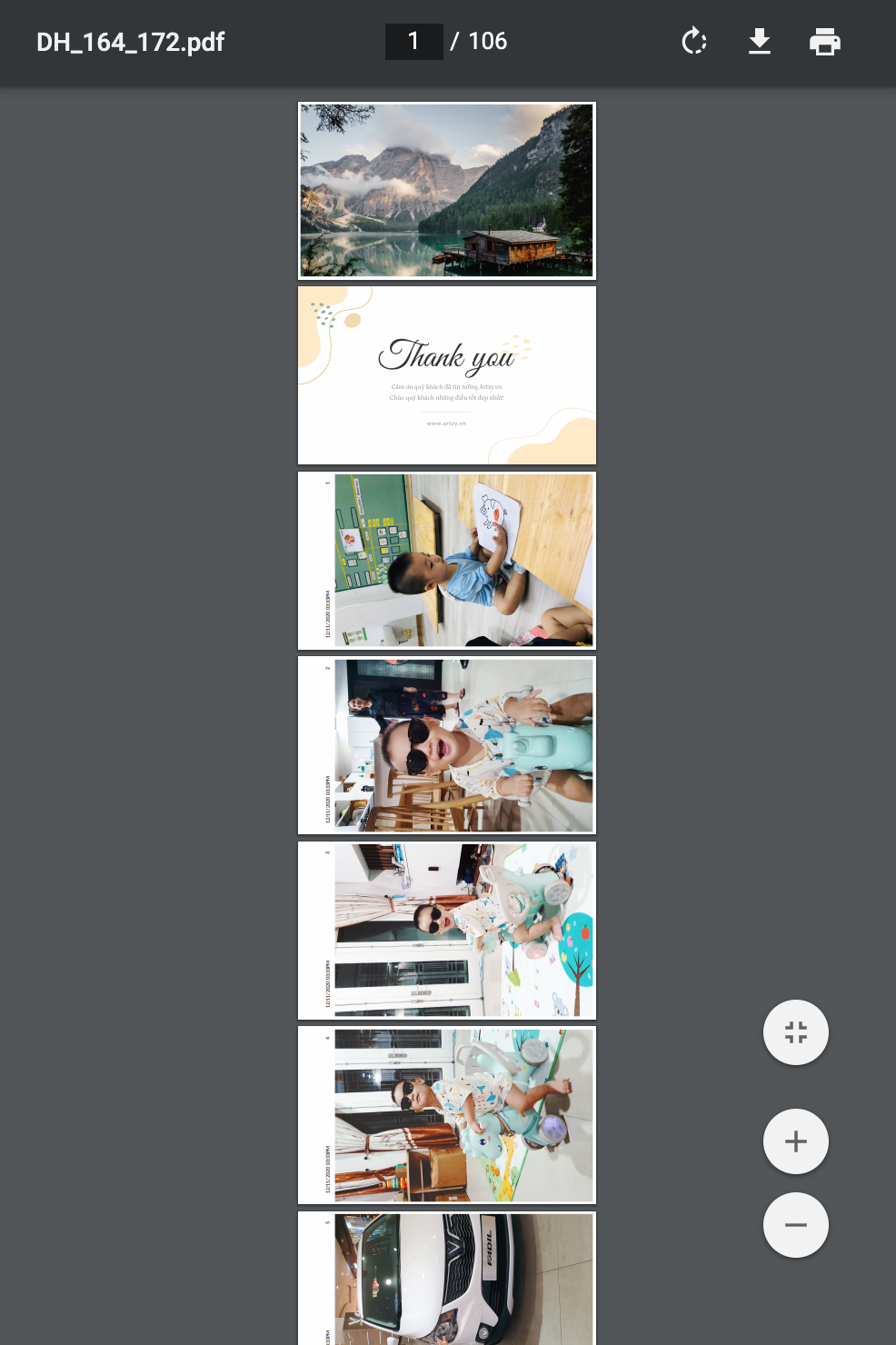
Download materials and send them to manufacturers
Voucher management
To increase brand awareness and acquire new customers, Artzy's business team decided to offer discount vouchers to boost sales. After discussion, we provided a simple, fast, easy to use and cost-efficient process of producing vouchers. In the current stage, the voucher module includes creation and management vouchers only.
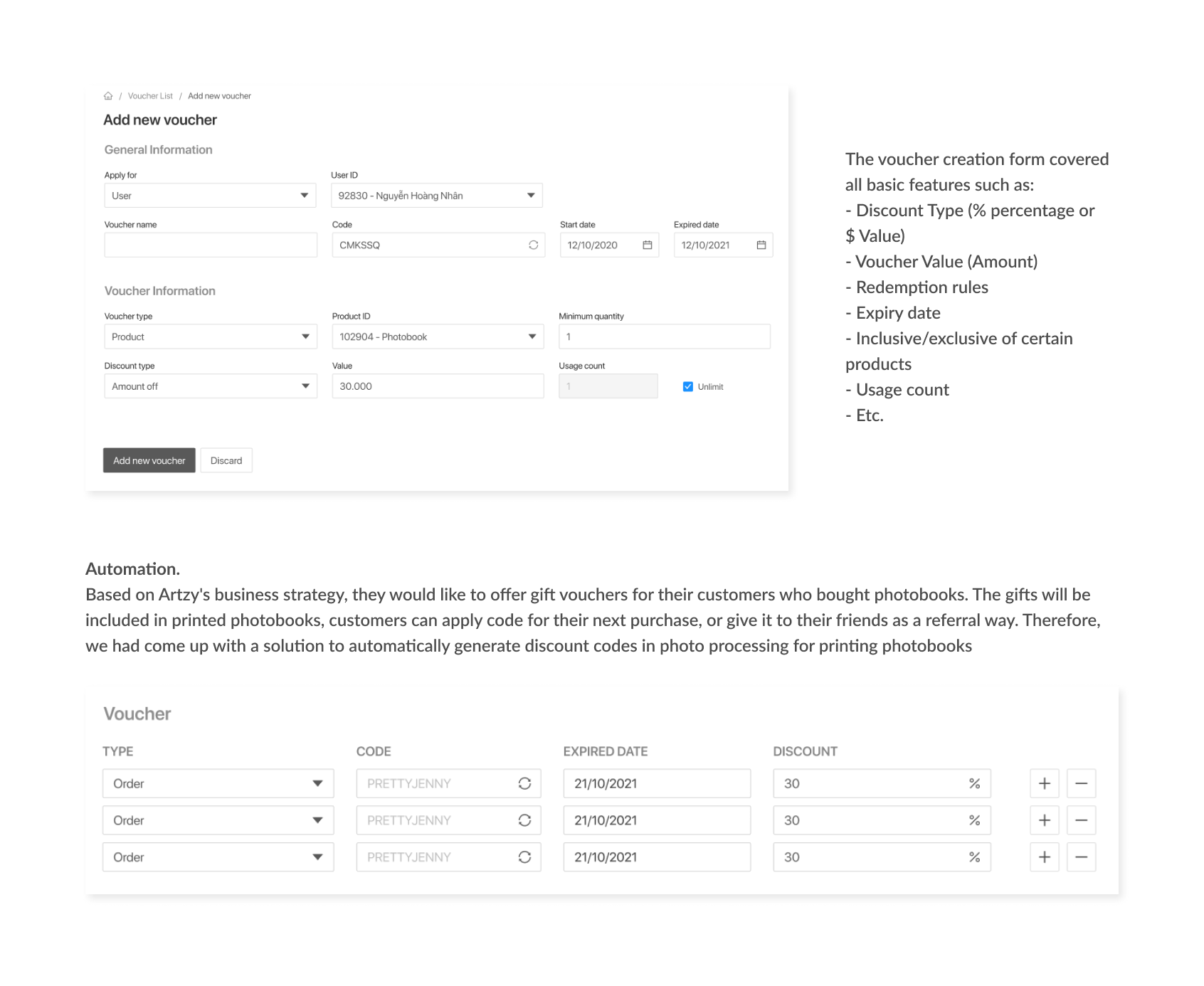

Uploading session
This module records all drop-off sessions of users, containing all information: product, date, UTM source and photos. This feature has been proven effective as Artzy's biz team is able to analyze user behaviors and patterns, track and measure marketing/sales strategies, as well as enhancing their customer support service.
Performance tracking & Data analysis
To gain the needed insights, we have collected users activities through multiple sources (Google Analytics, Yandex, built-in solution) then aggregate into our metabase, the centralize analytic dashboard.
The metrics are well-defined by our experiences with previous marketplace-alike application, covers throughout the process from the acquisition cost to retention rate.

2. System Design
Architecture
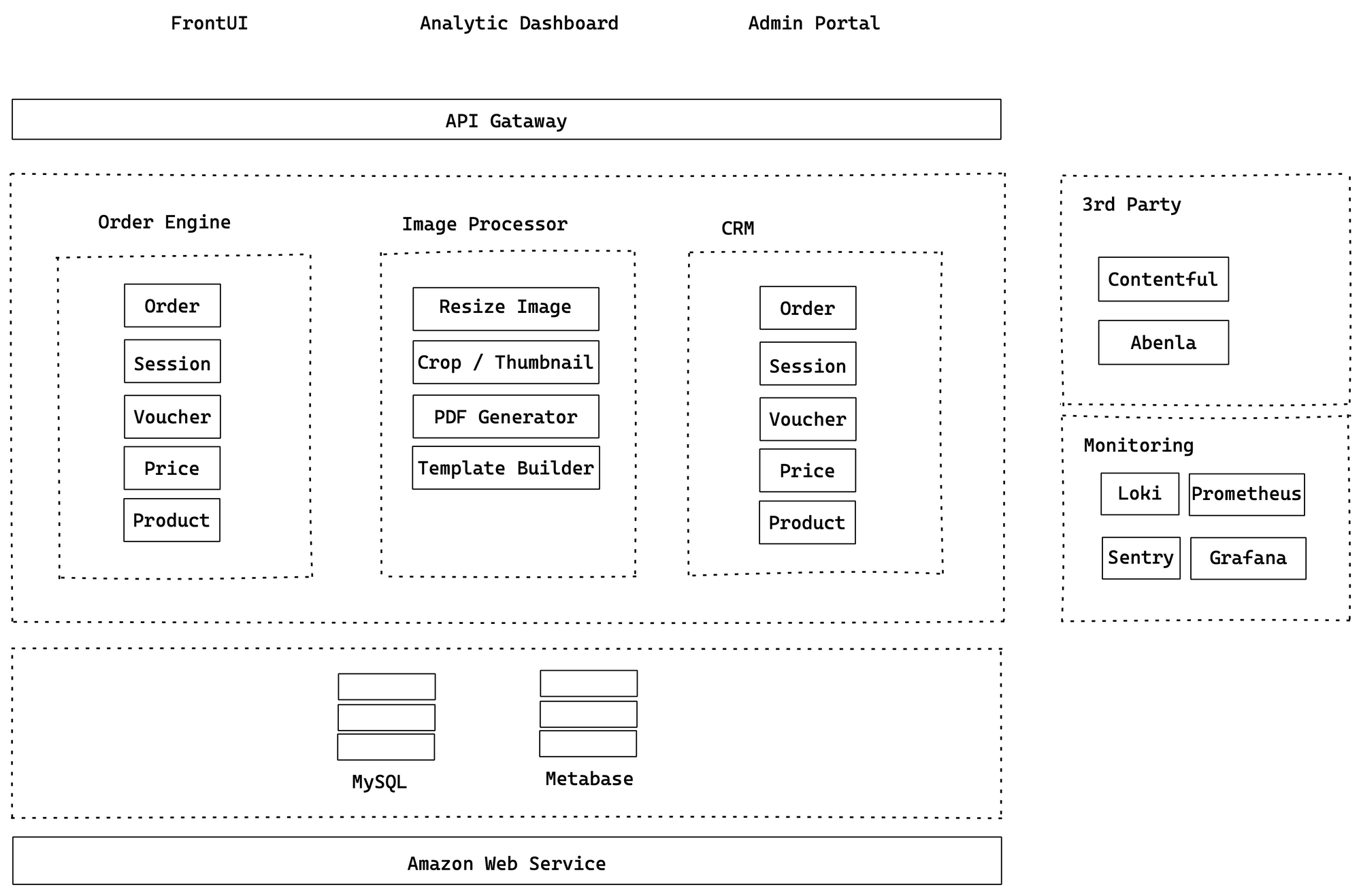
- Order Engine: The RESTful API backend backed by Elixir, we used Elixir + Phoenix framework to fasten the development time while maintain the high availability of the language.
- Image Processor: Where all the magic happens, we chose Go because it's fit with our use case, we need a high performance language that can scale easily with peaked traffic. Go also have a simplicity required to maintain a readability of a complex jobs
- Monitoring: We applied our monitoring stack to Artzy, they keep us notified when things went south through multiple channels. Grafana & Loki also help us a bit with the collected data, useful for debugging.
Cloud Infrastructure
We deploy our system to Amazon Web Service and keep them there. The overall Artzy cloud infra is as below.
- Docker Container: we apply the Docker centered workflow. Docker Container for deployment with data isolation & context separation.
- Kubernetes: K8s is a modern orchestration tool built by the Google team. Kubernetes orchestrates the docker containers under the service provided by Google Kubernetes Engine.
- Amazon Web Service: Artzy nodes are placed in the region of Singapore. The AWS gives us freedom and risk-free in a major cloud security issue.
- Vercel: For both front-page websites and admin dashboards, we deploy our React.js sites to Vercel. Using Netlify helps deal with the bottle-neck situation when the traffic suddenly goes north, also Vercel is great with the custom SEO and benefits the modern SSR
3. The Product Roadmap
After 3 months, we have accomplished the MVP development stage with the following modules:
- CMS for Order processing, Tracking Uploading Sessions and Product config.
- A mobile-first web application for Product Listing, photo uploading and order checkout.
The next milestone will mostly focus on business development and increase the number of transactions within the platform. By collecting data and analyzing customer behavior, we will have enough insight to improve the current platform and scale it to an e-commerce site.
The Outcome
Moving forward, together with the Artzy team, we have released the MVP for the Mobile printing platform. This collaboration brings a great impact on our partnership. As a result, Artzy has made its way to the market with the ability of product listing customization and tracking sales data based on the centralized database.
Product development, technical wise, and engineering quality are not the only things the Dwarves bring to the table, as a technical partner and a venture builder, we contribute to the product design stage to maximize Artzy's revenue streams through product feasibility and data analytics.
